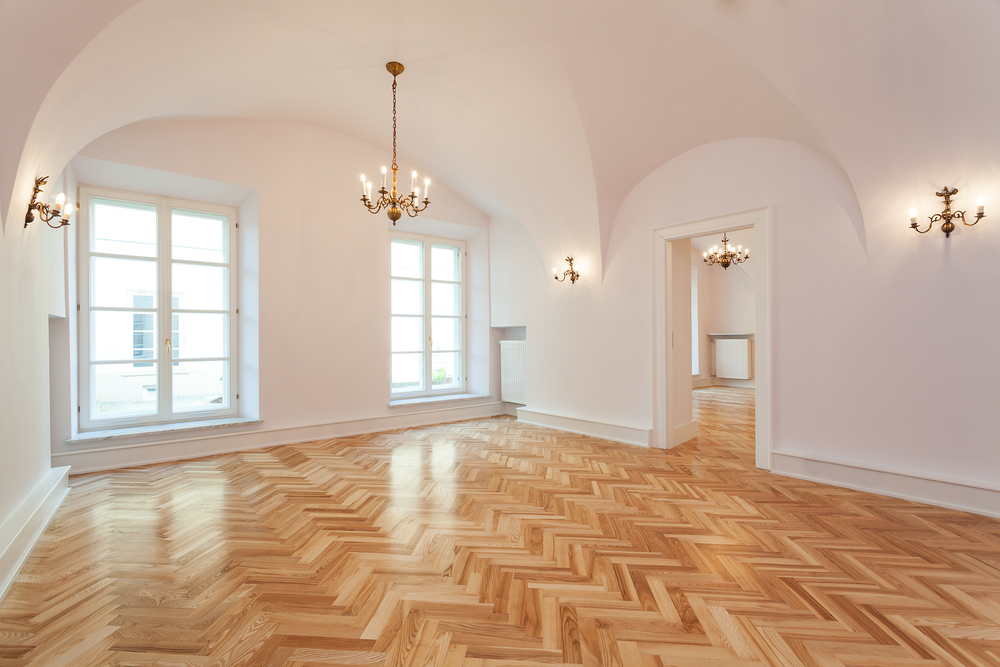Hints & Tips

How to restore parquet flooring
Parquet flooring is one of the most distinct and recognisable types of flooring, due to the patterned nature of the hardwood. It can easily be one of the most impressive floor types to look at, however as with other wooden floors it can be tricky to restore. There are many videos on the internet which show you how to restore wood and do it in a variety of different methods so we have compiled the best methods we could find.
Before we start however, we need to outline some common problems that your parquet flooring might have that you’re not aware of. Sometimes there will be a loose block and you don’t notice it until your steps cause visible damage to your parquet flooring, or perhaps there may be a block missing.Possibly the most common of all issues are scratches to the surface of the flooring, especially if you have pets, followed by spilled drinks, which can be pretty tricky to deal with on parquet flooring.
How can I replace missing parquet flooring blocks?
The best way to start to replace missing blocks is to measure the dimensions of the missing space, take a photograph of how the block looks and then try and find out what type of wood it is. Everything has to match block by block with parquet flooring which makes restoring it quite a challenge if there are a lot of pieces missing. In many cases you will have to either get a block in a different wood finish but that fits the dimensions or a block that takes up more spaces than it should but has the right sort of finish.
Here at Wilmac we’ll be able to handle the replacement of missing blocks for you. We can have blocks custom made to fit your specifications as closely as possible, we can also replace the block and adjacent blocks to make it seem less obvious that a missing block got replaced. The latter is the more common method of replacing missing blocks as it addresses the blocks around the missing piece which can be more prone to coming loose.
What if I have loose blocks?
The methods used for replacing missing blocks can also be applied to loose blocks. However, provided you want to retain the block it can get a little more complex, as you will need to replace the old adhesive present on the block and reapply new adhesive to get it to stick properly. This can be quite costly and time consuming and it doesn’t guarantee a successful restoration, as there could still be some structural faults which are causing the issue to reoccur.
Here at Wilmac we can provide you with support and advice regarding your parquet flooring and help you decide on the adhesive that will suit your floor. However most of the time we will have to look at it to be able to assess the damage or overall looseness of the blocks before moving in with any restoration efforts. Knowing what type of wood will be the first point of action as the blocks we bring and curate will have to fit the type of wood. We hope to work with you in order to make your parquet floors appear spotless.
My floor is covered in scratches! What can I do?
The main way scratches, spills and other noticeable damage to the blocks is solved is by sanding they floor down. This has to be done carefully and with finesse in order to make it match in with the blocks around the damaged area. However to do this on your own can be very tricky. Using a single sander with a continuous belt can do an ok job, however in order to get it perfect you will need a few different types of sander and that is where we come in.
We are experts at repairing and sanding floors down, especially parquet as it is one of the floor types with the highest potential for incidental damage. We have a variety of different sanders, ranging from high powered to very precise edge sanders to get those edges just perfect. If you have any damaged parquet floors in the Chester area then why not book a consultation with us.
Get in touch with us by calling 01204 682100, or by emailing us at [email protected], we look forward to helping you out with all of your parquet restoration problems.
Comments are closed here.